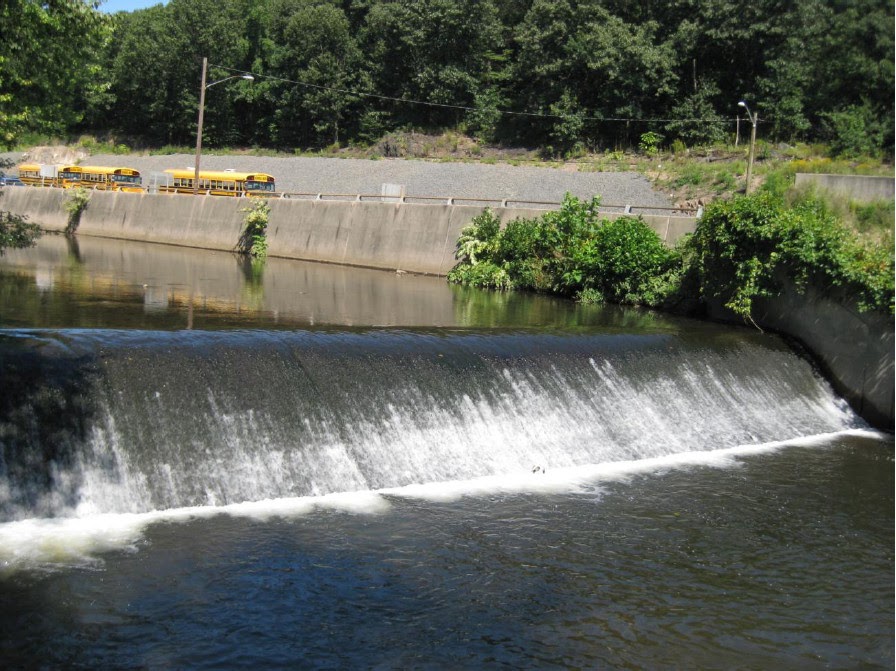BIL funding to Remove Middle Street Dam, Reconnect 8.5 Miles of Stream to Long Island Sound
CT DEEP will help to remove a defunct dam from the Pequabuck River located in Bristol, CT, restoring 8.5 miles of free-flowing river for fish passage and removing contaminated sediment that has accumulated behind the dam.

This article was originally published in December 2022 as part of the Bipartisan Infrastructure Law fact series.
The Middle Street Dam, located on the Pequabuck River in Bristol, CT, will be demolished and removed in order to restore 8.5 miles of unobstructed river. The Connecticut Department of Energy and Environmental Protection (CT DEEP) will lead the removal project with the help of a $1.6 million grant from Long Island Sound Study (LISS). The grant will be funded using allocations from the Bipartisan Infrastructure Law (BIL).
A granite dam was originally built at the site by the Bristol Brass Company in the 19th century to divert water to its factory. In the late 1960s, the current owner, the Connecticut Department of Transportation, smoothed over the dam and reinforced it with cement. The dam no longer provides any benefits, including flood protection, but it does require frequent maintenance and a yearly inspection.
As part of the dam removal process, contaminants that have accumulated behind the dam, including heavy metals and PCBs, will be fully removed from the site. Construction crews will then begin to remove the dam itself, which spans 95 feet across the river at a height of seven feet and a width of 15 feet. Once the dam is fully removed, which is expected by 2024, additional crews will plant native vegetation along the riverbank. Large cobbles will be placed on the sides of the affected riverbank to model the appearance of the environment just upstream. The area, including the site that was previously contaminated, will be restored to healthy wetland conditions, which will make it habitable for fish and other animals living near the banks.

The Middle Street Dam completely prevents migratory fish from being able to travel from Long Island Sound to the upper parts of the Pequabuck. Once the dam is removed, important fish species like alewife, sea lamprey, and the American eel will be able to migrate from Long Island Sound to stream habitat that can be used for foraging and spawning.
A restored river also will have community benefits. It should help enhance a proposed greenway along the river that passes the dam site. The proposed greenway also goes through a city-owned brownfield, a contaminated property city officials hope to clean up and develop into the park.
The Long Island Sound Study and its partners have reopened nearly 430 miles of rivers and streams for fish passage in Connecticut and New York since 1998.